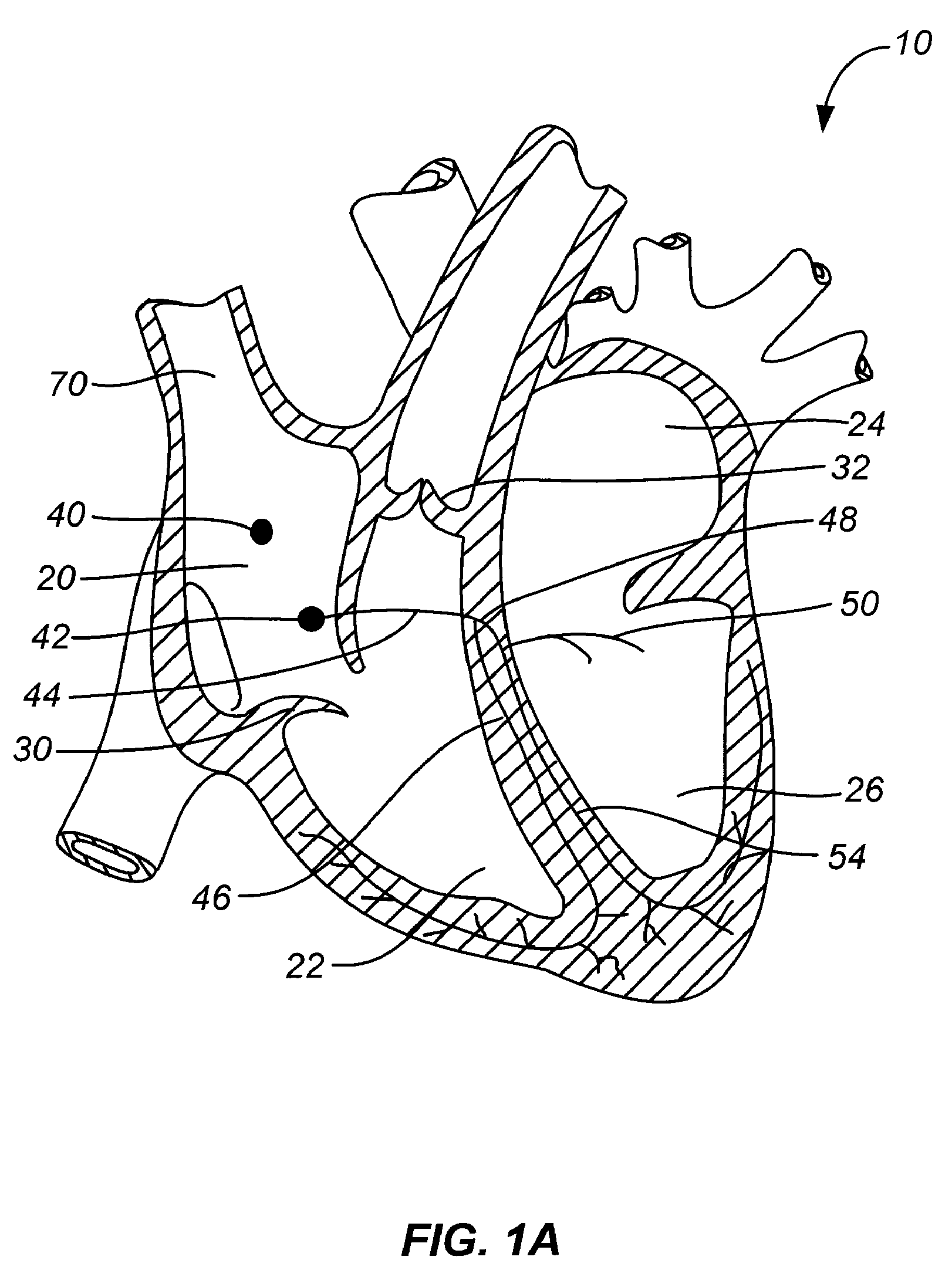Transcoronary sinus pacing system, LV summit pacing, early mitral closure pacing, and methods therefor
a transcoronary sinus and pacing technology, applied in the field of transcoronary sinus pacing system, lv summit pacing, early mitral closure pacing, and methods therefor, can solve the problems of pacemaker syndrome, ventricular pacing, and very effective pacemaker pacing, so as to facilitate identification of position and orientation, reduce the time required for activation, and optimize the early closure of the mitral valve
- Summary
- Abstract
- Description
- Claims
- Application Information
AI Technical Summary
Benefits of technology
Problems solved by technology
Method used
Image
Examples
Embodiment Construction
[0048]This system obviates the need for a separate lead placed in a coronary sinus vein 82 for transcoronary sinus pacing systems, as is currently practiced. The system relies on a the use of a single pacing catheter, which acts as an electrode lead, that is advanced through a guiding catheter to be positioned directly in, or near, the summit 28 of the left ventricle 26. Once positioned, the pacing catheter perforates the wall of the coronary sinus 66, locates the summit 28 of the left ventricle 26 a few millimeters from the place where the perforation occurs, and engages the summit 28 of the left ventricle 26 with an electrode tip. The actual location of perforation will be governed by patient specific anatomy and may vary slightly to avoid perforation of a coronary artery or ending up in the pericardium.
[0049]In order to appreciate the novelty of the invention, it is important to understand the basics of the human conduction system of the heart 10. The normal human conduction syst...
PUM
 Login to View More
Login to View More Abstract
Description
Claims
Application Information
 Login to View More
Login to View More - R&D
- Intellectual Property
- Life Sciences
- Materials
- Tech Scout
- Unparalleled Data Quality
- Higher Quality Content
- 60% Fewer Hallucinations
Browse by: Latest US Patents, China's latest patents, Technical Efficacy Thesaurus, Application Domain, Technology Topic, Popular Technical Reports.
© 2025 PatSnap. All rights reserved.Legal|Privacy policy|Modern Slavery Act Transparency Statement|Sitemap|About US| Contact US: help@patsnap.com



